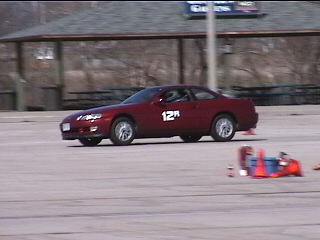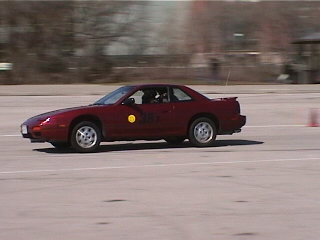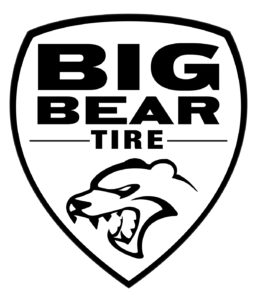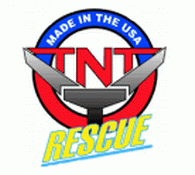AutoX FAQ
You get to decide what class to run in. This is an important decision because we want to place your car in its most competitive class, and changing it later is a hassle. Review our Car Category Worksheet to assist you. This is just an overview of your options, it's a good idea to read the Solo Rules and Car Classing page for more info, after all, it is your responsibility to class your car correctly.
You need to display your number and class on your car so the corner workers and timing & scoring can see it. That means seeing them in bad light, on an angle, from a distance, while you're moving at 60 mph. The SCCA rulebook states that all cars must have numbers and class letters on both sides, and that numbers be a minimum 8 inches high and use a 1.25 inch wide stroke. The class letters will be smaller, usually 4 inches high. They shall be of a contrasting color on body panels, not on windows (Hint: red & black don't contrast). You may use magnetic material, tape, or a large white paper label with thick black marker on it as long as the above rules apply. Note that shoe polish on your windows will NOT be allowed. Examples of what should and should not be on your car are found below.
Put your assigned car number and then the class letters after it, such as:
AS = A Street
ASL = A Street Ladies
STU = Street Touring Ultra
CM = C Modified
N = Novice (PAX class does not need to be displayed)
Magnetic Numbers, letters, and other autocrossing accessories are available from the following:
K&M Magnetics
Pegasus Auto Racing
SPS SoloPerformance
 Good Numbers |
 Bad Numbers |
Put your assigned car number and then the class letters after it, such as:
AS = A Street
ASL = A Street Ladies
STU = Street Touring Ultra
CM = C Modified
N = Novice (PAX class does not need to be displayed)
Magnetic Numbers, letters, and other autocrossing accessories are available from the following:
K&M Magnetics
Pegasus Auto Racing
SPS SoloPerformance
The Tech folks try to make sure your car is autocross worthy. They'll check your wheel bearings, brakes/fluid, battery security, etc. It's a basic safety check, we don't have time to tear each car apart. They'll also check for loose items in the car that might become projectiles (such as floor mats, paper, clothing, soda cans, etc), so clean it out the night before and make sure these objects are out of your car prior to going to tech inspection.
Bring your helmet with you as they'll make sure your helmet meets the minimum rating (if you are using a loaner helmet don't worry about this). Also, have your numbers displayed on the car as they'll check to see if you're car number/class is legible. If you do not bring your helmet or you do not have numbers on your car when you go to tech you will be forced out of line and have to wait in line again when the car is ready.
Once you pass Tech, they will put a sticker on your car and your helmet. If you do not have both a helmet and car sticker, you cannot run, they will be checking for them at the starting line. If Tech declares a car unsafe, it will not be able to run and the driver's entry fee will be refunded.
Bring your helmet with you as they'll make sure your helmet meets the minimum rating (if you are using a loaner helmet don't worry about this). Also, have your numbers displayed on the car as they'll check to see if you're car number/class is legible. If you do not bring your helmet or you do not have numbers on your car when you go to tech you will be forced out of line and have to wait in line again when the car is ready.
Once you pass Tech, they will put a sticker on your car and your helmet. If you do not have both a helmet and car sticker, you cannot run, they will be checking for them at the starting line. If Tech declares a car unsafe, it will not be able to run and the driver's entry fee will be refunded.
Helpful Tip: Check to see if you're eligible for an annual tech inspection.
The course is setup different from event to event, and there may or may not be a course map available.
It is very important that you know the flow of the course, so you have an idea of where you're going. It is recommended to walk the course at least three times. In Solo, this is one of the most important parts of your day. It’s best to develop your plan of attack and then adjust it after you take more runs, talk to others, and/or watch what others do on course. Look for the laydown or pointer cones that mark the insides of the turns, we'll be turning around them.
It is very important that you know the flow of the course, so you have an idea of where you're going. It is recommended to walk the course at least three times. In Solo, this is one of the most important parts of your day. It’s best to develop your plan of attack and then adjust it after you take more runs, talk to others, and/or watch what others do on course. Look for the laydown or pointer cones that mark the insides of the turns, we'll be turning around them.
Helpful Tip:We have a Novice Course Walk at approx 8:45am, so you can have someone experienced to walk along with and ask questions.
All participants are required to have a worker assignment, you will receive your work assignment in registration. If you do not work you will be DNF'd for the day. There are a variety of assignments to choose from such as corner working, grid, and timing & scoring.
For those who like to arrive early, we can usually use help with set-up, registration, and tech inspection. At the end of the day, we need help stacking cones and loading up the bus. If you don't work one of these special assignments you are required to work in the heats that you do not run. If you drive in Heats 1 and 3, then you work in Heat 2 and 4. If there are enough participants at the event, (140+) we will only have to work in one Heat. If there are any changes, we will make announcements on the P.A. or at the drivers meeting. Red umbrellas, cell phones, sandals and flip flops are not allowed while working the course. We recommend wearing tennis shoes.
For those who like to arrive early, we can usually use help with set-up, registration, and tech inspection. At the end of the day, we need help stacking cones and loading up the bus. If you don't work one of these special assignments you are required to work in the heats that you do not run. If you drive in Heats 1 and 3, then you work in Heat 2 and 4. If there are enough participants at the event, (140+) we will only have to work in one Heat. If there are any changes, we will make announcements on the P.A. or at the drivers meeting. Red umbrellas, cell phones, sandals and flip flops are not allowed while working the course. We recommend wearing tennis shoes.
Helpful Tip: Wear comfortable clothing, be prepared for any kind of weather, and bring water to drink.
We use two sets of Grids. Each grid has a center isle which the cars drive, and grid spaces indicated by cones on either side of the isle. Your grid is assignment based on when your class is running.
The first couple of grid spaces are for two driver cars; these are marked by green cones. Grid spaces are not assigned, so feel free to grid near your friends and/or cars in your class. The time between runs in a great time to meet new people, discuss line choices, and/or car setup with others. Changing grid spots to get a competitive advantage (weather, etc.) will be deemed as unsportsmanlike behavior.
The first couple of grid spaces are for two driver cars; these are marked by green cones. Grid spaces are not assigned, so feel free to grid near your friends and/or cars in your class. The time between runs in a great time to meet new people, discuss line choices, and/or car setup with others. Changing grid spots to get a competitive advantage (weather, etc.) will be deemed as unsportsmanlike behavior.
We follow the SCCA rules in regards to the sound policy, which is 100db @ 50 feet. We take these measurements at heavy acceleration zones on course. For reasonable first offenses, you will be asked to fix sound issue for the next event. An unreasonably loud vehicle will not be able to participate until the sound level is reduced.
Cars that are too loud effects site retention, and is detrimental to the hearing of the starter and corner workers. Please do your best to reduce the sound level of your vehicle!
Cars that are too loud effects site retention, and is detrimental to the hearing of the starter and corner workers. Please do your best to reduce the sound level of your vehicle!
After the official timed runs, we may have time for Instructional Runs. These are extra timed runs that don't count towards trophies for $1 each (sorry no re-runs for missed times). We have a short meeting to split the group in two. One group goes to work the course (no penalty calls necessary), the others form a continuous line as you leave grid. As you come around stay in line unless you are making changes to your car or changing drivers. The grid is not used for Instructional Runs.
Once the first group has completed their runs we switch around for an equal number of runs for the second group. If you run first, please head out and relieve someone on the course as soon as possible so the second group of drivers can start their runs.
Once the first group has completed their runs we switch around for an equal number of runs for the second group. If you run first, please head out and relieve someone on the course as soon as possible so the second group of drivers can start their runs.
Helpful Tip: This is a great time to swap cars with your buddies!
Awards shall be given to the highest placed drivers in each class at each event.
- One (1) award for three (3) entrants in a class
- Two (2) awards for four to six (4-6) entrants in a class
- Three (3) awards for seven to nine (7-9) entrants in a class
- One (1) additional award for every four (4) additional entrants
Note: Class with less than three (3) entrants will be moved into Combined Class for trophy awards.
The trophy presentation takes place at the trailer approximately 30 minutes after all runs are complete for the day. We will make an announcement prior to starting the trophy presentation. Trophy winners will have the option to select from various Milwaukee Region SCCA “trophy swag” or a "chit". You, or a friend, must be present to receive your trophy, or alternately, if you must leave early, ask the event organizer for your trophy before you leave. If you are not present, you will be awarded a “chit” by default. A "chit" is a $5 credit placed in your registration account for a discount to a future event.
- One (1) award for three (3) entrants in a class
- Two (2) awards for four to six (4-6) entrants in a class
- Three (3) awards for seven to nine (7-9) entrants in a class
- One (1) additional award for every four (4) additional entrants
Note: Class with less than three (3) entrants will be moved into Combined Class for trophy awards.
The trophy presentation takes place at the trailer approximately 30 minutes after all runs are complete for the day. We will make an announcement prior to starting the trophy presentation. Trophy winners will have the option to select from various Milwaukee Region SCCA “trophy swag” or a "chit". You, or a friend, must be present to receive your trophy, or alternately, if you must leave early, ask the event organizer for your trophy before you leave. If you are not present, you will be awarded a “chit” by default. A "chit" is a $5 credit placed in your registration account for a discount to a future event.
(Fastest class time) / (your time) x 100 = (your class points for the event)
For example, if the class winner ran a 50 second time, 2nd place ran a 51, and 3rd ran a 55 we'd have...
50 sec. / 50 sec. x 100 = 100 pts for 1st place
50 sec. / 51 sec. x 100 = 98 pts for 2nd place
50 sec. / 55 sec. x 100 = 91 pts for 3rd place
For example, if the class winner ran a 50 second time, 2nd place ran a 51, and 3rd ran a 55 we'd have...
50 sec. / 50 sec. x 100 = 100 pts for 1st place
50 sec. / 51 sec. x 100 = 98 pts for 2nd place
50 sec. / 55 sec. x 100 = 91 pts for 3rd place
The Class Trophies are year-end award given to the drivers with the highest number of points at the end of the season for each class. It requires a minimum of 3 events to qualify, and you can only win one class per year. Number of trophies awarded in each class is determined just like event trophies, but based on the number of members eligible for year-end awards.
Since not everyone can attend every event, and we never know exactly how many events we'll have (weather, Brewers playoff schedule, etc.), we use the following to determine how many events are used for class scoring.
- 5 event season = your best 4 events
- 6 event season = your best 4 events
- 7 event season = your best 5 events
- 8 event season = your best 5 events
- 9 event season = your best 6 events
- 10 event season = your best 6 events




